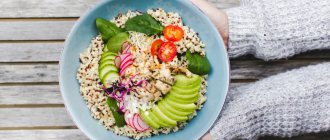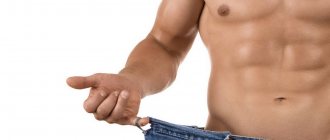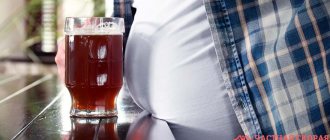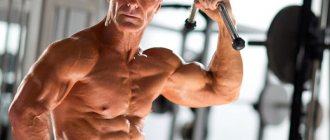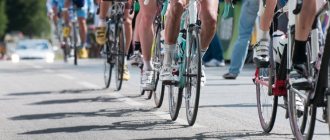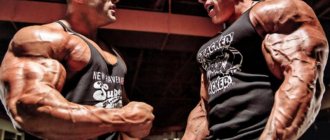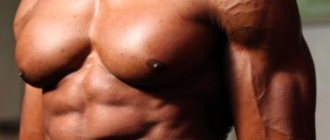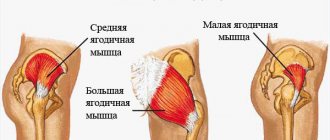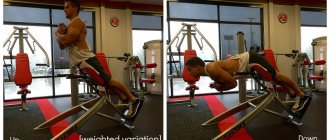After the period of gaining muscle mass, which is important for pros and gym enthusiasts, comes an equally significant period – work on relief. Drying means the maximum reduction in subcutaneous fat content for better muscle definition; for athletes, an important criterion for high-quality drying is separation (visible muscle division). But still, how to dry out without losing muscle mass, maintaining as much as possible the volumes gained so hard? This is a complex and strong-willed job that requires a set of actions.
Cutting nutrition without losing muscle mass
If a bodybuilder needs to exceed the number of calories in order to gain mass, then counting and limiting nutrients during cutting is extremely important. On the one hand, going too far in the caloric content of food will not make it possible to gain lean muscles, and on the other hand, if there is a lack of dietary fat, both fat and muscles are lost. To avoid this, follow the recommendations.
Drying period
- Start gradually reducing carbohydrates and fats before the drying period begins ; this will make it easier, mentally and physically, to adapt to this period.
- Calculate the drying time, depending on the total fat mass - the more fat, the longer the drying . Typically, drying takes from 4 to 8 weeks - this period is enough for fat burning to occur without loss of muscle tissue.
- Eat often , every 2-3 hours, do not wait until you are hungry.
At the beginning of drying, the ratio of BJU for daily intake is as follows.
Squirrels
The most important substance for drying is protein. A large amount of protein, including amino acids, will not allow muscles to break down, and the great advantage of protein products is their low fat content and the absence of carbohydrates. Simply put, it’s hard to gain weight from protein, but you can only maintain muscle on a high-protein diet. The following products are allowed for drying: lean meat, poultry, lean fish and seafood (mussels, shrimp, squid), low-fat cottage cheese, eggs (with a limit of 2 yolks per day). The optimal protein content for drying is 4-5 g per 1 kg of weight.
Carbohydrates
The minimum carbohydrate content in the diet, unfortunately, significantly reduces the level of energy and strength during training. The main thing here is not to remove carbohydrates altogether, because with a low-carbohydrate diet, muscles burn easily, since energy is obtained precisely through muscle catabolism. To avoid this, take carbohydrates in the amount of 2 g per 1 kg of weight, but no more. Only complex carbohydrates with a high content of solid dietary fiber are consumed - brown rice, buckwheat, oatmeal, wheat, green vegetables, herbs, fruits with a low glycemic index - green apples, citrus fruits.
Fats
Paradoxically, the right fats can fight excess fat in the body. Fatty acid molecules remove their own fat. But only some fats can not harm drying and speed up this process; these are unrefined oils (olives, walnuts, flax, etc.), nuts and seeds. Despite the benefits of fatty acids, it is worth limiting fat intake to 30 g per day. In this case, it is better to drink a tablespoon of butter with water before breakfast, or have a snack, for example, cottage cheese with a small handful of nuts.
Read more about products during drying →
Menu for the day
- intake: oatmeal, egg whites, tea or coffee without sugar;
- intake: apple, cottage cheese with nuts;
- Reception: rice, boiled chicken fillet;
- meal: eggs, rice, salad with seafood and olive oil;
- intake: fish, fresh vegetables;
- Reception: cottage cheese, egg whites.
Differences between women's body drying and men's[edit | edit code]
No matter how much debate there is on this topic, for professional athletes there is no fundamental division of the drying process by gender. The differences are always individual. This primarily refers to the difference between the initial and final body weight. For girls it is usually much less than for men, so the drying process for girls differs not in the composition of the stages, but in their intensity and duration. In particular, this applies to restrictions on proteins and carbohydrates. With the correct structure of the training process, the refusal of protein and carbohydrate foods in girls occurs later than in men and closer to competitions. Sometimes it coincides with the stages of water removal. But so as not to cause serious harm to the body of the girl, who, by the way, is yet to give birth to children, it is better not to reduce the intensity of drying, as well as the time.
Another difference can be considered the fact that for girls, even not athletes, a light drying regimen will be comparable to a diet and will be a way to achieve a beautiful figure. But for a man who has not been involved in sports, the result may not be as attractive as one would like and the stress on the body may not be justified.
Sports nutrition for cutting after gaining weight
Recommendations for sports nutrition during cutting naturally differ from weight gain. During this period, all additives containing carbohydrates and promoting the accumulation of fluid in the body are excluded (gainers, pre-workouts, liquid L-carnitine, creatine, bars, protein with a high content of milk sugar). Below is a list of permitted additives.
Whey isolate
It is the purest protein product because it contains a minimum of lactose. This product is not necessary for cutting, but is an excellent alternative to a full meal before or after training.
Amino acids
Full cycle complexes and BCAA are the main helpers in preventing catabolism. Despite the fact that the diet is rich in protein, additional intake of quickly absorbed amino acids will help prevent muscle breakdown after sleep and exercise. With a low-carb diet, amino acids will never be superfluous.
L-carnitine
This vitamin-like substance is capable of transporting fats into energy. The supplement will not have a big impact on fat loss, but it will help add energy and speed up metabolism. L-carniine forms must be encapsulated, without impurities and sugar. Take 30-40 minutes before training.
Fat burners
Another helper in obtaining additional energy and reducing appetite is a thermogenic fat burner. Although these supplements have contraindications and side effects, sometimes it is almost impossible to cope without them on a low-calorie diet. Typically, such products contain a patented ECA complex (ephedrine, caffeine, aspirin), but should be taken with caution , starting with one capsule in the morning, then adding a second dose at lunch after a meal, but before training.
Medical contraindications to drying[edit | edit code]
In addition to serious medical health contraindications associated with the training process, there is another contraindication to drying - accelerated metabolism. Drying in this case is simply not necessary, at least not as described above. The body already burns fat well, but increased drying will lead to serious health problems.
As we can see, the process of drying and preparing an athlete’s body for competition is individual, very complex, has a lot of pitfalls and limitations and requires special attention from the coach and supervising doctor. And it’s not always possible to achieve an ideal result from the first drying. This can be compared to setting up a complex device, which, in essence, is the human body.
Workouts: how to dry off after gaining weight
There is one training system for both home training and the gym. After gaining mass, endurance work begins. This involves losing subcutaneous fat through more repetitions. The optimal number of repetitions for cutting is 15-20 (depending on the fat tissue). If during the period of mass gain the adipose tissue has not increased much, train 15 times per approach. This amount will prevent muscle breakdown, but will also speed up metabolism for effective fat burning.
Train 4-5 times a week, combining strength and cardio training. Divide the main muscle groups by day. An excellent method for cutting is training with supersets. For example, after squats, immediately move on to lunges, 30 seconds of rest and 3 more circles. Thus, the two exercises are performed as one. Perform 3 of these supersets per workout. Do not exceed the duration of the workout more than one hour.
Cardio training can be done on a separate day, or on a strength training day. Don't exceed 40 minutes, but don't exercise for less than 20 minutes. Choose the optimal heart rate when running or on the orbit track.
The heart rate zone for fat burning includes 120 – 160 beats per minute.
Removing water from the body[edit | edit code]
In the last 3 weeks of drying, it is worth thinking about removing excess and other water. This will further emphasize the athlete’s shape and give the muscles a more impressive look. The process of removing water begins with the preparatory stage - increased fluid intake. This is done so that the body, receiving at least a double dose of water per day, begins to intensively remove it.
The period of oversaturation of the body with water takes on average from 7 to 14 days.
Next comes a period of maximum reduction in the amount of fluid taken. At this stage, the body does not yet realize that the amount of incoming water has greatly decreased and continues an enhanced output regime. Some athletes also add diuretics to enhance the effect. But this can be dangerous not only by depletion of the body, but also by disturbances in the functioning of the kidneys.
The final stage of drying should correspond to the final stage of deliberate dehydration of the body. A discrepancy in timing in one direction or another will lead to a deterioration in the athlete’s well-being and form.
If there is no result
If, following the nutritional and training requirements, suddenly the results stop for a long time, this means that the body has become accustomed to everything. What will be safe for muscles is to reduce carbohydrates to 1.5 g, while eliminating lactose and fructose from the diet, and increase the amount of cardio exercise. But it is important to make sure that muscle is not lost along with fat.
If the effect is the opposite, increase the amount of carbohydrates, but not at the expense of a cheat meal. This technique is not suitable for everyone and more often than not, it stops the drying result due to a jump in carbohydrates, after which the body does not feel an energy deficit, and this prevents it from taking energy reserves from fat.
Popular questions
Having figured out what supplements you need to take to build muscle, you should dispel several popular myths about sports nutrition.
- It is necessary to distinguish between sports nutrition (dietary supplements, supplements, sports nutrition) and sports pharmacology. The first is specially developed products that help to enrich the daily diet with useful substances that the athlete often lacks. However, such nutritional supplements are not a complete replacement for a normal healthy diet. Dietary supplements do not have a dramatic effect on the body; they are a nutraceutical product.
- Sports pharmacology is the achievements of the pharmaceutical industry, various synthetic and semi-synthetic drugs that can influence the biochemical processes occurring in the human body. In essence, sports pharmacology can be understood as pharmaceutical drugs used to treat certain problems.
- Absolutely everyone can use sports nutrition, and pharmacological drugs, for example, anabolic steroids, require caution, as they are unsafe for some categories of people.
- Supplements for muscle growth are not addictive. After stopping taking such drugs, the muscles do not decrease in size. High-quality products do not harm health, do not burden the liver and kidneys, and are generally well tolerated.
Functional supplements for athletes are not a replacement for a normal diet, since they cannot cover the body’s need for all necessary macro- and micronutrients. When choosing a sports nutrition, it is recommended to choose products with proven effectiveness. Combined with intense training and a balanced diet, they will help you achieve really good results.
Basic rules to help you dry out
Okay, obviously friends, I'm partly joking! You've probably heard most of this list, perhaps you're even more realistic and have often heard "Let's do it Jeff's way that he talked about last week!" And you don’t drink, you don’t have cheat meals, except maybe once a year.
Is this necessary? Is this the formula for ripped muscles? I can tell you right now - no, not at all. This works in my case, but is definitely not a requirement.
There are so many incredibly dry kids out there who stay that way all year round, and yet they have quite a lot of cheat meals, and they definitely drink alcohol, because that's not the point!
What I want to do for you today is to tell you incredibly useful information. Really useful, without any nonsense. You will definitely find out what you need to do. Because every person who manages to stay dry all year round does 5 real things, tricks and habits that I am going to share with you today.
And if you do anything, try to pay attention even if you are a little disappointed that some of these things cannot be quickly remembered. But I promise you – these things will be very useful for you.
First
And so, the first thing you need to do if you are going to be dry and finally get rid of body fat, then you can’t go on a diet! It is forbidden! You can't go on a diet! None of the regular owners of lean, sculpted muscles go on diets. They have already gotten rid of this terminology. They now eat to fuel their bodies. It's not just food, it's a lifestyle. And I've said this so many times and I want to say it again, because nutrition should become part of your mantra.
You can't go on diets. They are all based on constraints and decisions. They do not have a temporary status and cannot be observed over a long period. And this is the complete opposite of the goal of drying out and staying dry all year round and so on year after year. Diet cannot be part of this.
We recommend reading: How can you replace deadlifts?
I also already said that if you have achieved a certain level of drying out with the help of a diet, then it is this technique that contributed to this that you should adhere to in the same form. And if this was difficult to achieve due to restrictions, then you will not be able to stay in this form.
No one who stays dry year-round has anything in their vocabulary that even remotely resembles dieting or any form of dieting. They only have food!
Second
The second point is that you need to drink a lot of water. I know it sounds cliché and you’ve probably heard this advice often, but there are reasons for this. One of them is based on the fact that when you drink water throughout the day, you are much more aware of the difference between thirst and hunger. And when you need to refuel your body, you do it in the right ways, avoiding mistakes.
Staying hydrated throughout the day also provides secondary benefits such as more energy. And we all know that your energy levels can drop if you don't drink enough water throughout the day.
As a result, we become dehydrated and our productivity decreases. Even if only by a minimal percentage, the impact will be significant. You will especially feel this when you go to the gym to train.
Third
This is exactly what all the ripped guys do. This may shock you, but they all always prioritize high-intensity strength training over cardio. Again, it's almost the opposite. You're probably thinking, "No, I have to do my cardio sessions!" and so the majority thinks.
“I have to do cardio if I want to lose weight” – no, I shouldn’t! The most important thing you can do is prioritize training with heavier weights. Because the more lean muscle mass you build, the more likely you are to stay lean forever. Not for a short period of time. Because it is known that muscle tissue is more active.
By lifting weights, we are more likely to build lean muscle mass in our bodies than by doing conditioning or cardio. We also know that in this case, our sensitivity to insulin is higher. That is, our body reacts differently to the food we put in it because we have added lean muscle tissue.
We recommend reading: Raising dumbbells overhead
All of these things will make us stronger so that we are much better equipped for a lifelong pursuit of lean body as opposed to burning a few extra calories in a conditioning or cardio workout that has very, very temporary results and is focused on that one effort or cardio work. vascular system.
Thus, it is much better if you cut this part out of your training schedule (in case you are short on time or doing strength training) and try to lift weights and build more lean muscle mass in your body.
Every person with a lean and ripped body will tell you that this is what they do every time.
Guys, I might be ashamed to admit the lack of conditioning training in my regimen, but I am physically developed and can I take and perform a general physical training workout? Of course I can, because I've been training as an athlete all my life. But at the same time, I would say that I don't do enough conditioning training.
What am I doing? I prefer:
- your diet;
- strength training;
- working with scales.
You should definitely do the same!
Fourth
During your weight training sessions (which we just talked about), are you lifting weights that you need to lift or that you can lift? There are several important points here.
Calculate your ideal sports weight!
Guys, when we talk about the weights we can handle, we are talking about pure strength training, and in our endeavor, very often a little extra weight will be helpful. It can create extra lift and allow you to lift more pounds - which is great if that's your goal.
At the same time, if your goal is to be lean and ripped, then a lean body always looks more muscular. In this case, you will always look better, no matter how much muscle mass you have at that moment. The point is that when you are in the gym, you choose your working weights correctly. I'm not saying don't lift heavy weights!
You should lift as heavy weights as you can without sacrificing form in the pursuit of strength. We know that working this way often results in injury. If you're obsessed with numbers, you'll probably get hurt. And when this happens, it will be the fastest way to get out of shape, to be always out of shape because you will lose activity because you cannot go to the gym regularly.
As a rule, at the same time you begin to say to yourself: “It doesn’t really matter what I eat today, since I’m not working out anyway, what’s the difference!?” And then you start doing this day after day, week after week. And you begin to go off a path that you never return to.
Therefore, you need to make sure that you are working with the weight you should be working with, and not trying to chase numbers that you might be able to lift!
Drying the body: menu for men and women[edit | edit code]
Drying the body: nutrition program for women (initial weight 60-70 kg, height 152-168 cm)[edit | edit code]
Day one: normal
- 60 g fish, a couple of sprigs of parsley, 30 g boiled rice, 1/2 orange
- omelette made from two whites, one whole egg and 1/2 cup milk
- 60 g chicken (fillet), 30 g boiled buckwheat, 1 tomato, 3 olives
- 100 g cottage cheese (0%), 1 banana, 1/2 orange
Days two and three: cut carbs
- omelette made from two whites, one whole egg and 1/2 cup milk
- 60 g veal, 1/3 sweet pepper, 2 lettuce leaves, greens
- 80 g fish, 150 g cauliflower (broccoli, zucchini, asparagus), 2 lemon wedges
- 300 ml kefir or 100 g cottage cheese (0%)
Day four: increase carbohydrates
- 30 g oatmeal, 1 tablespoon raisins, 3 dried apricots
- 3 egg whites, 30 g rice, 1/2 orange, a couple of sprigs of greens
- 70 g veal, 30 g boiled rice, 2 lettuce leaves, 1 tomato, 3 olives
- 120 g cottage cheese (0%) or 125 g natural yoghurt (0.1%)
Drying the body: menu for men (initial weight 80-90 kg, height 175-187 cm)[edit | edit code]
Day one: normal
- 200 g chicken, 200 g potatoes, 1 leaf of Chinese cabbage, 1 tomato
- 250 g cottage cheese, 1 banana, 2 tangerines
- 200 g fish, 300 g rice, 1/3 sweet pepper, 3 leaves of white cabbage
- 100 g veal, 5 boiled proteins, 150 g boiled potatoes, 2 leaves of Chinese cabbage
- 200 g chicken, 60 g boiled rice, 3 lettuce leaves, 1 tomato, 1/3 sweet pepper, 1 tablespoon olive oil
- 200 g fish, 70 g pasta, 2 lettuce leaves, 1 tomato
- 200 g chicken, 200 ml orange juice
Days two and three: cut carbs
- 200 g fish, 100 g white cabbage, 1 tomato
- 8 boiled whites, 2 oranges
- 200 g chicken, 150 g zucchini, 2 lemon slices, parsley
- 8 boiled proteins, 2 grapefruits
- 200 g fish, 100 g white cabbage, 1 tomato
- fruit salad: 1 orange, 1/3 grapefruit, 10 grapes, 1 kiwi, 1 walnut kernel, 10 almonds, 2 teaspoons pumpkin seeds
- salad: 2 cans of tuna in its own juice, 1 teaspoon of olive oil, 2 lettuce leaves, 1 green onion, 1/2 tomato, 1 mashed bread
Day four: increase carbohydrates
- salad: 100 g chicken, 1 boiled protein, 100 g boiled potatoes, 3 leaves of Chinese cabbage, 1/3 sweet pepper, 1/2 cucumber
- 200 g cottage cheese, 200 ml kefir, 4 tangerines
- 100 g chicken, 2 soft-boiled eggs, 150 g boiled potatoes, 2 lettuce leaves, 1 tomato, 1/3 sweet pepper
- fruit salad: 1 orange, 1/3 grapefruit, 10 grapes, 1 kiwi, 1 walnut kernel, 1/2 apple
